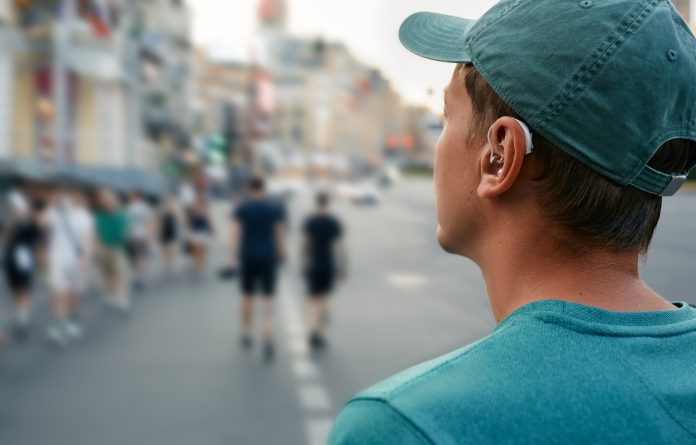Taking steps to protect our hearing often falls low on people’s agenda, but hearing loss can have serious lifelong consequences. Lorna Rothery spoke to Yishane Lee from Hearing Health Foundation about the impact of noise-induced hearing loss and what needs to change
How common is noise-induced hearing loss? What are the key risk factors?
The leading cause of noise-induced hearing loss is listening to loud sounds for prolonged periods. Statistics vary, but it is estimated that one in four adults shows signs of noise-induced hearing loss. There is increasing evidence that noise-related hearing loss is occurring in younger individuals, resulting in a threshold shift affecting their ability to hear sounds.
Our ‘Keep Listening’ campaign is predominantly aimed at individuals aged 12-35 to prevent noise-induced hearing loss. The National Institutes of Health (NIH) has established an 85-decibel limit for workplace-related noise exposure, assuming an eight-hour workday over five days. However, the problem is that makers of children’s headphones have incorrectly adopted this 85-decibel limit as the safe limit. In reality, 85 decibels is quite loud, and even this limit does not prevent all hearing loss from noise. Furthermore, this limit is intended for adults in the workplace and does not account for the developing auditory systems of children or the 24/7 noise exposure that many individuals experience nowadays.
Recent developments have suggested that the actual safe limit for noise exposure may be as low as an average 55 decibels. Scientific American, The Washington Post, and The New Yorker have covered this topic in recent articles, indicating a growing awareness of the issue in the media.
What about sound limits at large events like music concerts?
The current lack of regulations on sound levels for recreational activities such as concerts, football games, and even weddings is a concern. With our campaign, we aim to shift the culture towards taking better care of our ears and not taking our hearing for granted. We also want to emphasize that fun doesn’t have to be excessively loud. Rather than being strict and prohibitive, we want to encourage small changes in behavior that can make a
big difference. For example, the decibel scale is logarithmic, similar to the Richter scale; this means that a three-decibel increase in the 80s and 90s decibel range doubles the sound intensity, even though it may not sound twice as loud.
By reducing volume by just three decibels, we can cut the associated risk in half. We also want to educate people about our daily sound exposure and finding ways to give our ears a rest in our noisy, 24/7 world.
If you walked out of a concert and your vision was blurry, you’d be worried you’d damaged your vision. But people think it’s normal to walk out of a concert with ringing in their ears and muffled hearing and they don’t realize these are signs you’ve damaged your hearing. Usually your ears recover, but over time, and repeatedly, the hearing damage may not go away.
How can hearing loss impact a person’s quality of life?
Hearing is not just about your ears; it’s also about your brain. Untreated hearing loss is related to a higher risk of cognitive decline and dementia. Even mild, untreated hearing loss, meaning not being able to hear a whisper, can double your risk for dementia. It’s important to note that the correlation between untreated hearing loss and cognitive decline is just that, a correlation and not causation. One theory about the link is that when we can’t hear everything, our brain works harder to make sense with less sound information, which taxes the brain and can affect memory.
Research, such as that conducted by Professor Frank R. Lin at Johns Hopkins University, has shown that untreated hearing loss can have serious consequences. Studies are now being conducted to see if using hearing aids can help prevent these risks.
What current and emerging treatments are available for hearing loss?
Just as it’s easier to prevent cancer than to treat it, the same principle applies to hearing loss, as noise is the only 100% preventable cause of hearing loss.
Treating hearing loss typically involves the use of hearing aids. In the US, however, hearing aids are not always covered in full by insurance; they are seen as a cosmetic item and this has to change. Over-the-counter hearing aids are one solution for adults with mild to moderate hearing loss, but unlike reading glasses, hearing is unique, and there’s a concern that people might try these hearing aids, find them unsatisfactory, and give up on finding proper assistance.
When hearing aids are no longer effective, cochlear implants are an option for individuals with more severe hearing loss. These implants are particularly beneficial for children who are born with severe hearing loss and they can acquire language and speech just as typical-hearing children do.
We’ve been following the gene therapy trials for the otoferlin gene; international, multi-center trials have shown promising results in reversing this specific type of genetic hearing loss.
Another significant development those gene therapy trials have shown is the successful delivery of drugs into the inner ear, which is a complex process given its tiny size and bones and fluid-filled, pressurized compartments.
Our research consortium, the Hearing Restoration Project, is aiming to regrow the sensory hair cells in the inner ear. This research is based on the discovery that birds, reptiles, and fish can regrow their inner ear hair cells, which means they can retain their hearing, while mammals, including humans, have lost this ability over time. Our researchers have uncovered a lot of details about the specific genes that need to turn on and off, and in what order, in order to induce the regrowth of hair cells.
What future measures would you like to see to prevent hearing loss?
The World Health Organization has predicted that by 2050, approximately 2.5 billion people will experience some level of hearing loss, and over a billion young adults are at risk of permanent, avoidable hearing loss due to unsafe noise levels. This is a significant issue that needs to be addressed.
It’s crucial to raise awareness about this ‘quiet epidemic’ as it is often overlooked. People tend to take their hearing for granted, and this is a global problem.
Individuals should take preventive measures, such as wearing earplugs in noisy environments. I remember I was at a movie and had forgotten my earplugs, and I was worried about damaging my hearing.
Public education about the impact of loud noise is crucial. We don’t want to discourage people from going out and enjoying themselves, but it’s important to take care of their hearing so they can continue to enjoy these experiences in the long term. We need a shift in the attitude towards loud noise. It’s possible to have fun without the noise being overwhelming and permanently damaging to hearing.
We want everyone, young and old, to listen responsibly: be aware of the sound level and your daily sound dose, whether through our headphones or at a loud event; to carry and wear earplugs when needed; to rest our ears after a loud exposure; and to advocate for quieter shared public spaces. Remember that turning it down even a little can do a lot to save our ears.











